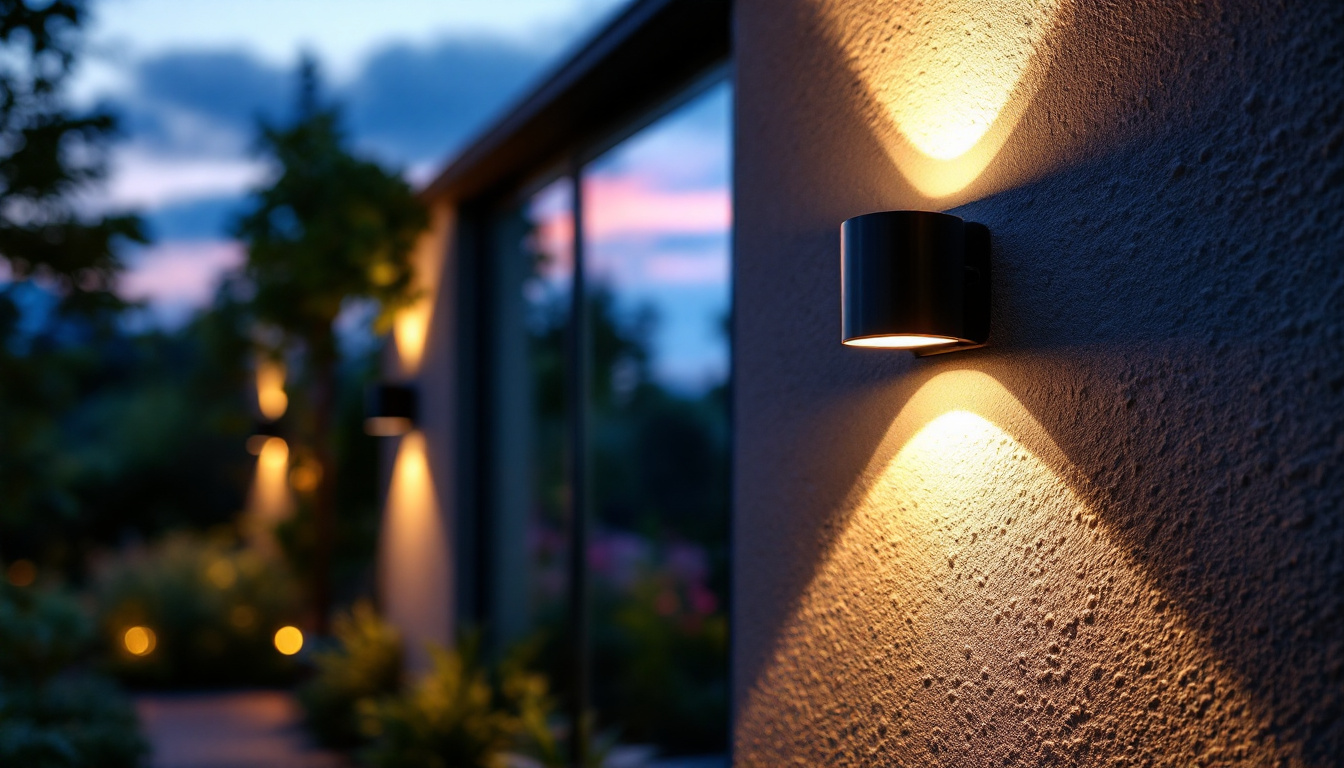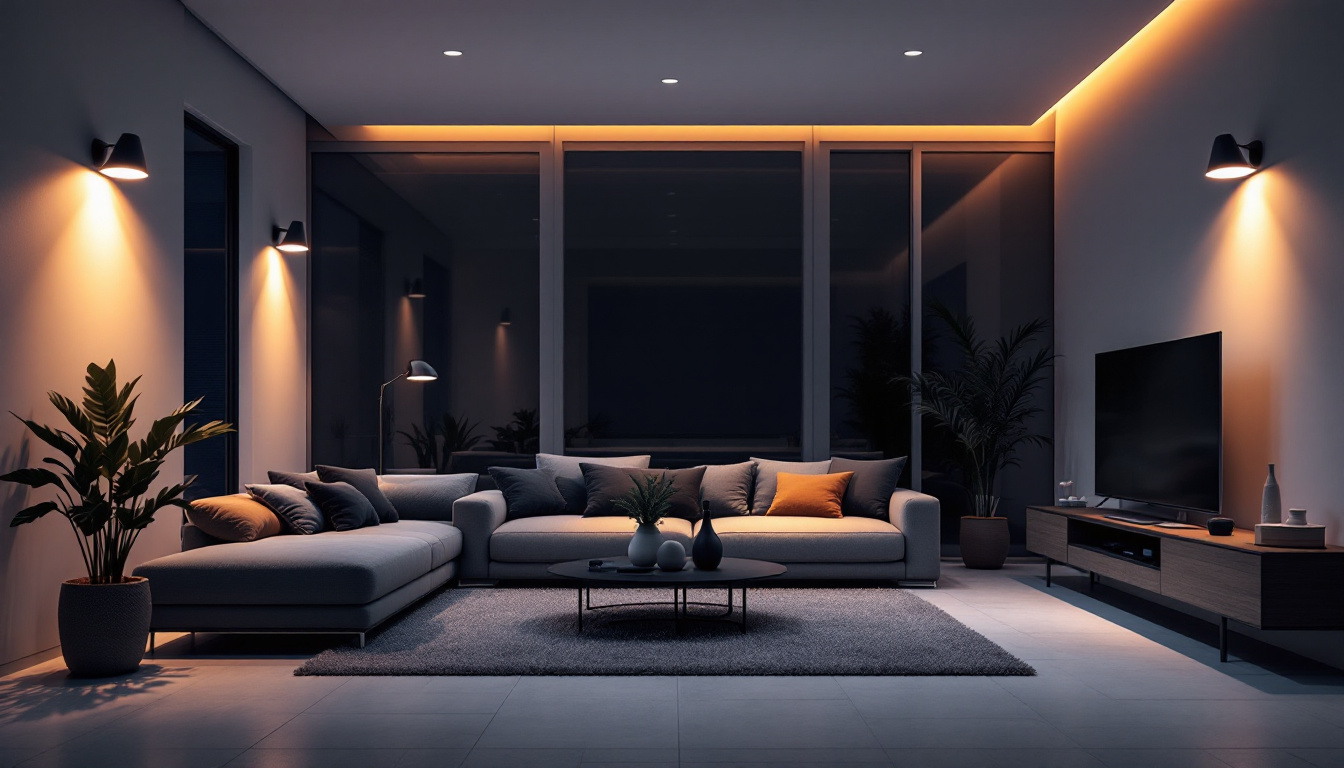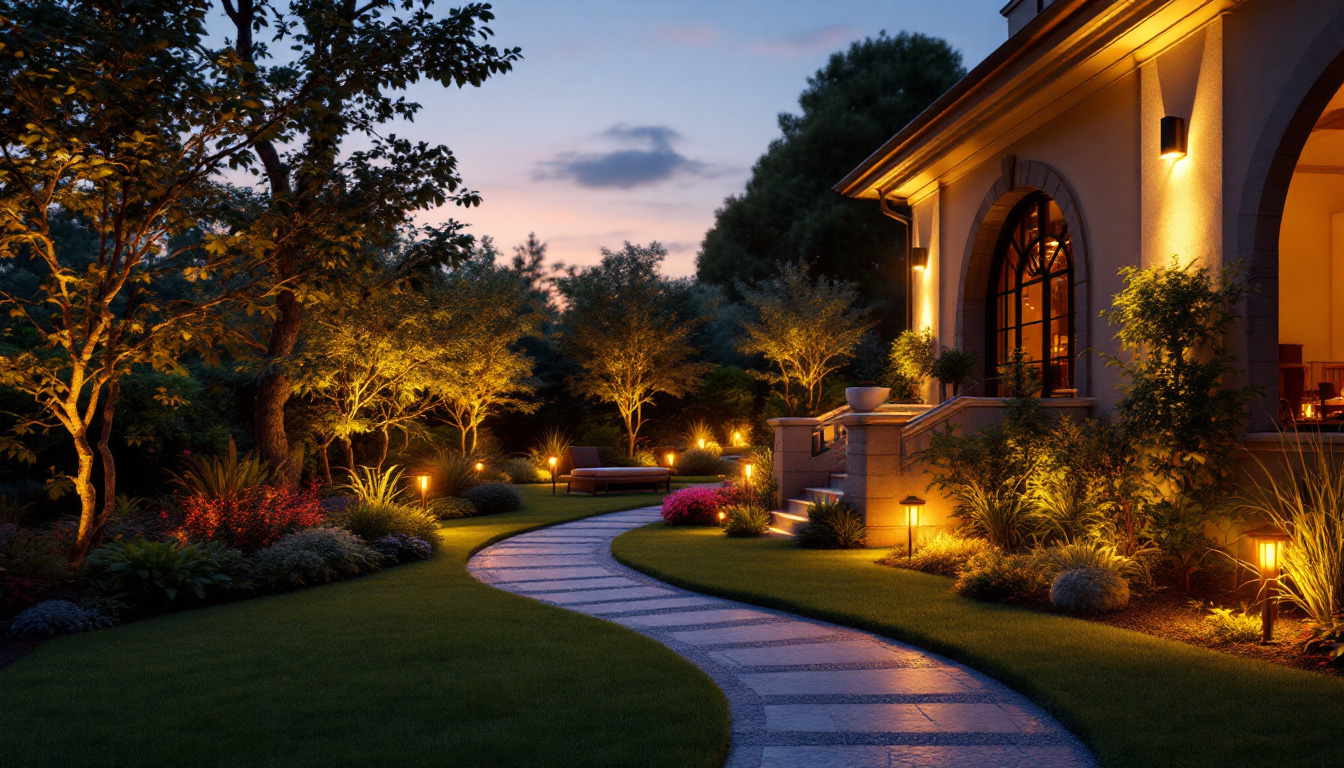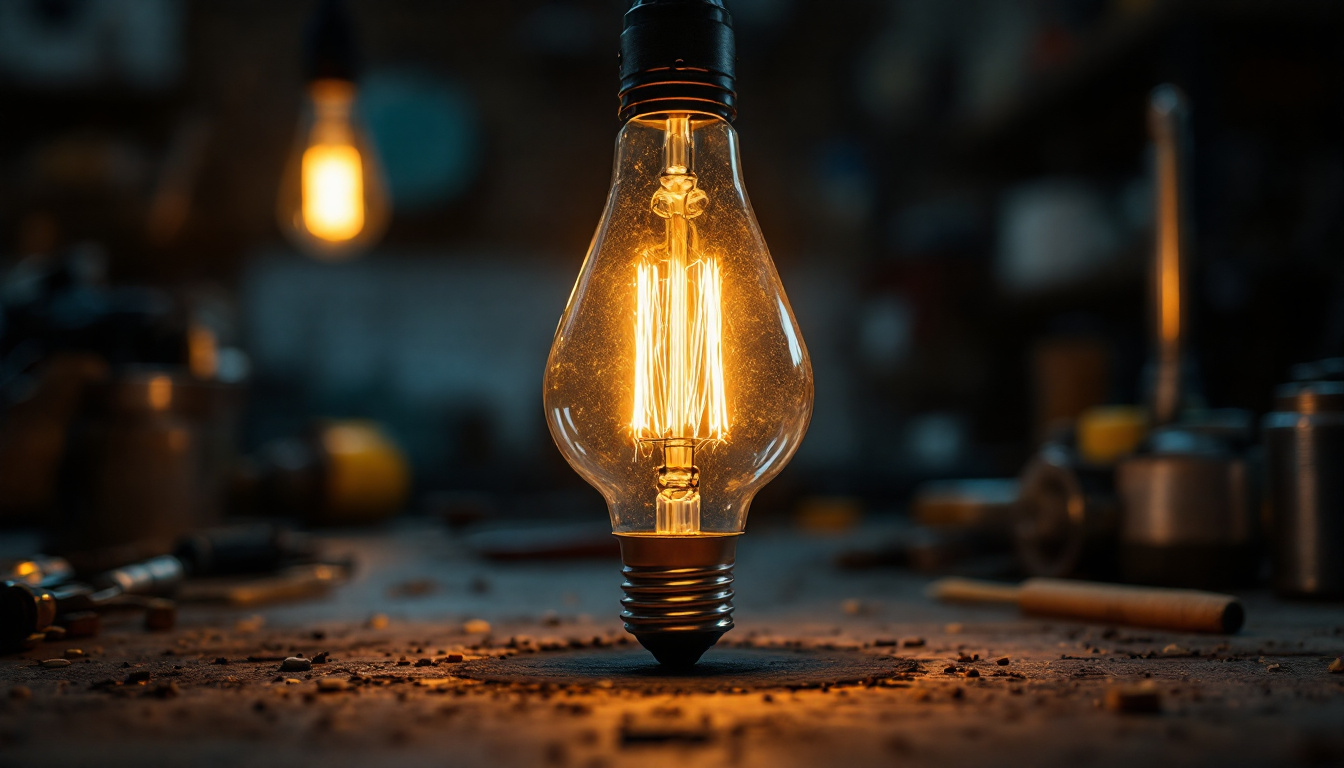
Indoor wall-mounted lights serve as both functional and aesthetic elements in residential and commercial spaces. For lighting contractors, understanding the best practices surrounding their installation and design can significantly enhance the quality of projects and client satisfaction. This article delves into the essential considerations for indoor wall-mounted lighting, offering insights into design, installation, and maintenance practices.
Before diving into best practices, it’s crucial to grasp the fundamental concepts of wall-mounted lighting. These fixtures are versatile and can be used for ambient, task, or accent lighting, depending on their placement and design. Their adaptability makes them a favorite among designers and homeowners alike, as they can seamlessly blend into various decor styles, from modern minimalism to classic elegance.
Wall-mounted lights come in various forms, each serving distinct purposes. Sconces, for instance, are often used to create ambient lighting, while picture lights can highlight artwork. Understanding the different types helps contractors make informed decisions based on the client’s needs. For example, a well-placed sconce can dramatically change the mood of a space, offering both illumination and artistic flair.
Another popular type includes wall washers, which are designed to illuminate walls evenly, enhancing the room’s overall brightness. These fixtures can create a sense of depth and dimension, making spaces feel larger and more inviting. By familiarizing oneself with these types, a contractor can recommend the most suitable options for each project, ensuring that the lighting not only serves its purpose but also enhances the overall aesthetic experience.
Wall-mounted lights can be effectively utilized in various settings, from residential homes to commercial spaces. In residential areas, they can enhance hallways, living rooms, and bedrooms, providing both functionality and style. For instance, a pair of wall sconces flanking a mirror in a bathroom can provide ample lighting for grooming while adding a touch of sophistication. In commercial settings, they can be used to highlight products in retail spaces or create a welcoming atmosphere in restaurants, where the right lighting can influence customer mood and behavior.
Contractors should consider the specific application of wall-mounted lights to ensure they meet the intended purpose while also aligning with the overall design aesthetic of the space. Additionally, the choice of bulb type—whether LED, incandescent, or fluorescent—can significantly affect the ambiance. Warm white bulbs may create a cozy and inviting atmosphere, while cooler tones can enhance focus and productivity in office environments. By taking these factors into account, contractors can deliver tailored lighting solutions that elevate both the functionality and beauty of any space.
The design of wall-mounted lighting fixtures can significantly affect the ambiance of a room. Contractors must pay attention to several design aspects to ensure that the lighting complements the overall decor.
When selecting wall-mounted lights, the style should harmonize with the existing decor. For modern spaces, sleek and minimalist designs are often preferred, while traditional settings may benefit from ornate fixtures. Understanding the client’s vision and the architectural style of the space is essential for making appropriate selections.
Moreover, color temperature plays a crucial role in the overall feel of a room. Warm white lights create a cozy atmosphere, while cooler temperatures can make a space feel more vibrant and energetic. Contractors should guide clients in choosing the right color temperature based on the intended mood of the area. Additionally, the finish of the fixtures—whether matte, glossy, or metallic—can also influence how light is reflected and absorbed in the room, further enhancing the desired aesthetic.
The placement and height of wall-mounted lights are critical for achieving optimal illumination. Generally, fixtures should be installed at eye level, typically between 60 to 72 inches from the floor. However, this can vary based on the specific application and the height of the room.
For hallways, placing lights at regular intervals can create a visually appealing and functional lighting scheme. In contrast, in areas like bedrooms, bedside sconces should be positioned to provide adequate light for reading without being too harsh. It’s also important to consider the surrounding furniture and architectural features when determining placement; for example, wall-mounted lights can be strategically positioned above artwork or mirrors to highlight these elements and create a layered lighting effect. Furthermore, dimmable options can offer flexibility, allowing homeowners to adjust the brightness according to different activities or times of day, enhancing the overall versatility of the lighting design.
Proper installation is key to ensuring that wall-mounted lights function effectively and safely. Lighting contractors must adhere to industry standards and local codes to guarantee a successful installation. A well-executed installation not only enhances the aesthetic appeal of a space but also maximizes energy efficiency, contributing to lower utility bills and a reduced carbon footprint.
Before installation, it’s vital to assess the electrical requirements of the chosen fixtures. This includes ensuring that the existing wiring can support the new lights and that the circuit is not overloaded. Contractors should also consider the use of dimmers, which can enhance the versatility of wall-mounted lighting. Dimmers allow users to adjust the brightness according to their needs, creating the perfect ambiance for various activities, from reading to entertaining guests.
It’s advisable to use junction boxes that are rated for the specific fixture type, ensuring that they can safely support the weight and electrical load of the lights. Proper grounding and securing of wires are essential to prevent electrical hazards. Additionally, using energy-efficient LED fixtures can further reduce the strain on the electrical system, providing longer lifespans and lower heat output, which is especially beneficial in enclosed or compact spaces.
Each region has specific electrical codes and regulations that must be followed during installation. Contractors should familiarize themselves with these codes to avoid potential legal issues and ensure the safety of their installations. This includes understanding the requirements for fixture placement, wiring methods, and circuit protection. Staying updated on any changes to local codes is crucial, as regulations can evolve to address new safety concerns or technological advancements.
In addition, obtaining the necessary permits before starting work can prevent delays and complications. Clients often appreciate contractors who are knowledgeable about local regulations, as it reflects professionalism and attention to detail. Furthermore, documenting the installation process can serve as a valuable reference for future maintenance or upgrades, ensuring that any subsequent work aligns with the established standards and does not compromise safety or functionality.
Dust and dirt can accumulate on wall-mounted lights, diminishing their brightness and aesthetic appeal. Clients should be encouraged to clean fixtures regularly with a soft cloth and a gentle cleaner, avoiding harsh chemicals that could damage the finish.
Additionally, it’s essential to check the bulbs periodically. Replacing burnt-out bulbs promptly not only maintains the lighting quality but also prevents strain on the electrical system.
Lighting contractors should be prepared to address common issues that may arise with wall-mounted lights. Flickering lights can indicate loose connections or a faulty switch, while dim lights may suggest that a bulb needs replacement or that the fixture is incompatible with the existing dimmer switch.
Educating clients on these troubleshooting tips can empower them to resolve minor issues independently, enhancing their overall satisfaction with the installation.
The lighting industry is continually evolving, with new trends emerging that can enhance the functionality and aesthetics of wall-mounted lights. Staying informed about these trends can help contractors offer cutting-edge solutions to their clients.
Smart technology has made its way into the lighting sector, allowing homeowners to control their wall-mounted lights through mobile apps or voice commands. This technology not only offers convenience but also enhances energy efficiency.
Contractors should consider recommending smart wall-mounted lights that can be integrated into existing smart home systems. This can be a selling point for tech-savvy clients looking for modern solutions.
As sustainability becomes increasingly important, energy-efficient lighting options, such as LED wall-mounted lights, are gaining popularity. These fixtures consume less energy and have a longer lifespan compared to traditional incandescent bulbs.
Contractors should educate clients about the benefits of energy-efficient options, including potential cost savings on electricity bills and reduced environmental impact. Providing a range of energy-efficient choices can also enhance the contractor’s reputation as a forward-thinking professional.
Indoor wall-mounted lights are an essential component of effective lighting design. For lighting contractors, understanding the best practices surrounding their selection, installation, and maintenance is crucial for delivering high-quality results that meet client expectations.
By considering design elements, adhering to installation standards, and staying updated on trends, contractors can offer valuable insights and solutions to their clients. Ultimately, the goal is to create well-lit spaces that enhance both functionality and aesthetics, leading to satisfied customers and successful projects.
For lighting contractors looking to deepen their knowledge of wall-mounted lighting and related best practices, several resources are available. Industry publications, online courses, and professional organizations can provide valuable insights and updates on the latest trends and technologies.
Networking with other professionals in the field can also lead to the exchange of ideas and experiences, fostering growth and innovation. By continuously seeking knowledge and improving skills, contractors can ensure they remain competitive in the ever-evolving lighting industry.
Ready to elevate your lighting projects with the finest selection of wall-mounted lights? At LumenWholesale, we provide lighting contractors with spec-grade lighting products that combine quality, affordability, and convenience. Say goodbye to local distributor markups and hello to our unbeatable wholesale prices, extensive selection, and the reliability that comes with industry-standard lighting solutions. Plus, enjoy the simplicity of bulk buying with free shipping, ensuring you get the best value without any hidden costs. Make your next project shine by choosing Wholesale Lighting at the Best Value with LumenWholesale.

Discover essential insights and expert tips for lighting contractors on incorporating solar sconces into projects.

Discover how LED pot lights are revolutionizing lighting design and installation with their energy efficiency, versatility, and sleek aesthetics.

Discover how outdoor landscape lights are transforming the success of lighting contractors by enhancing aesthetics, boosting energy efficiency, and increasing client satisfaction.

Discover the fascinating history of the light bulb’s invention and gain valuable insights tailored for lighting contractors.